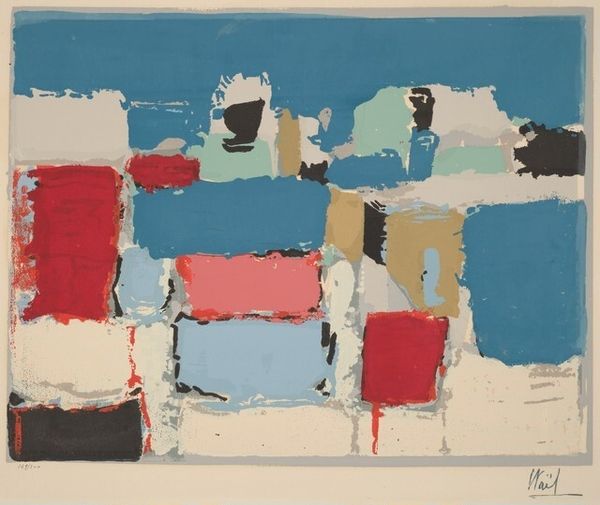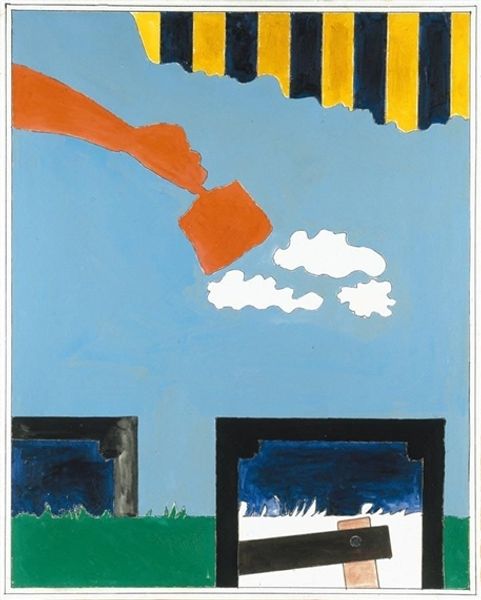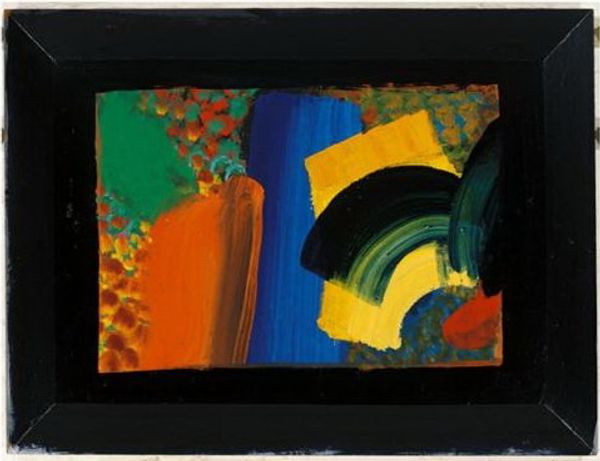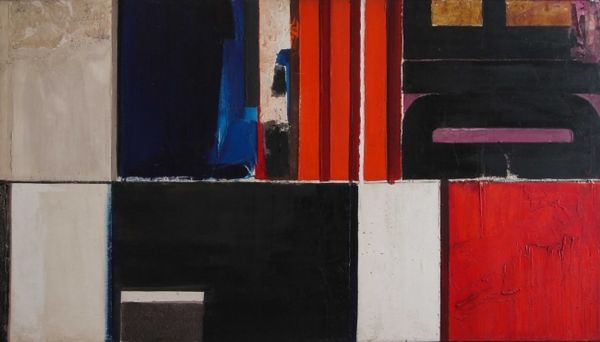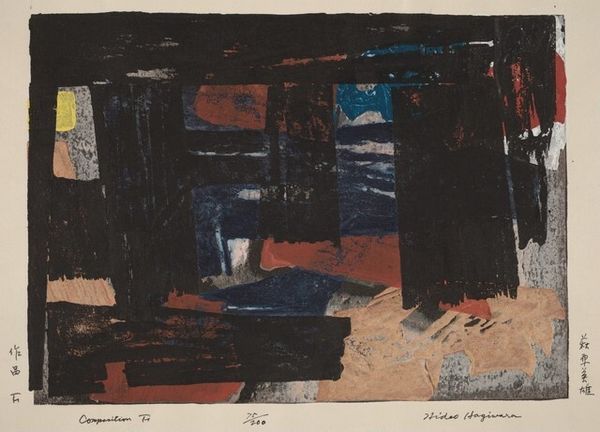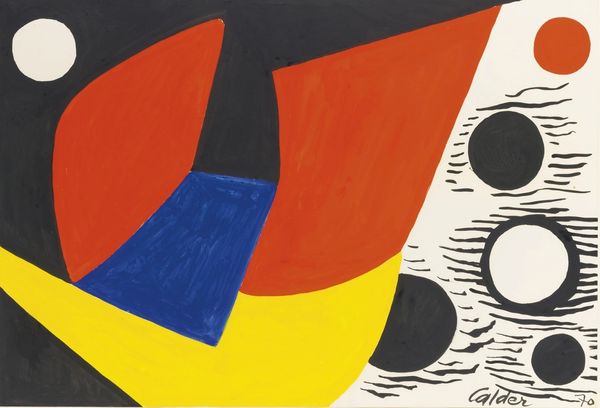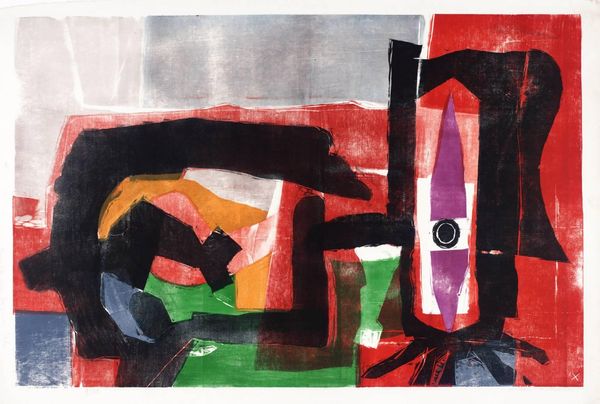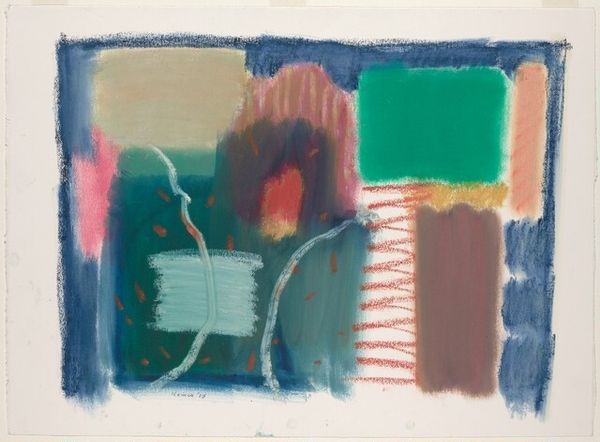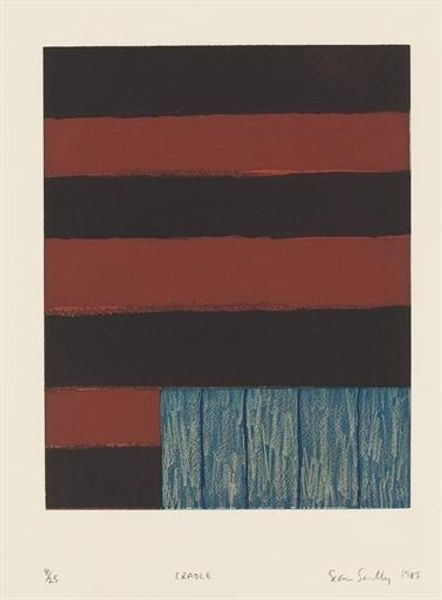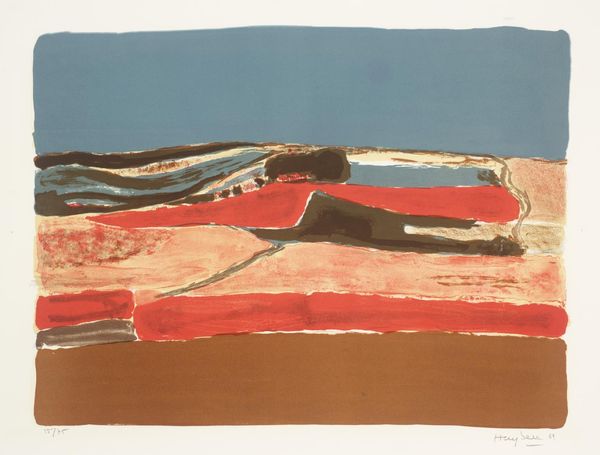
painting, oil-paint
#
abstract-expressionism
#
painting
#
oil-paint
#
figuration
#
oil painting
#
modernism
Copyright: Louise Bourgeois,Fair Use
Curator: This is Louise Bourgeois's "Fallen Woman (Femme Maison)," painted in 1947. It's an oil on canvas piece, and the title immediately suggests a collapse of identity. Editor: Yes, that raw red-orange background combined with the fragmented figure definitely evokes a feeling of disorientation and exposure. There's an undeniable tension in how the human form is merged with—almost crushed by—that architectural shape. Curator: Bourgeois was exploring domesticity and the female experience in post-war America. Her repeated motif of the "house-woman" critiques the societal expectations placed on women as homemakers. Editor: Right, the house here is crudely rendered as a solid, almost suffocating block. I am fascinated by the materiality and how this almost opposes the delicate rendering of the head on the left side of the work. Did Bourgeois employ specific painting techniques to get these distinct visual results? Curator: Absolutely. Her use of thick, gestural brushstrokes, combined with the juxtaposition of these flattened abstract forms, speaks to the constraints placed on women, trapping them within these constructed environments. I imagine how Bourgeois meticulously worked to build up this crude effect...it reflects a deeper understanding of the craft as a critical force. Editor: The historical context here is key. Post-war societal pressures confined women to the domestic sphere. And Bourgeois, through this artwork, confronts those imposed roles and reveals the psychological burden of such confinement. Looking closer at it, this 'house', seemingly made up of heavy black oil paint, threatens to overtake the woman on the left. Curator: The piece functions, I think, as a poignant social commentary but also transcends that, becoming a wider reflection of gender dynamics and architectural space. It suggests how spaces, created by means of construction, often create restrictive definitions. Editor: This work truly invites us to think about art's potential to highlight unspoken aspects of everyday experience, in both subtle and overwhelming forms. I particularly enjoyed revisiting how domestic and gender norms, rooted deeply in our shared history, found representation in visual artistic form.
Comments
No comments
Be the first to comment and join the conversation on the ultimate creative platform.
